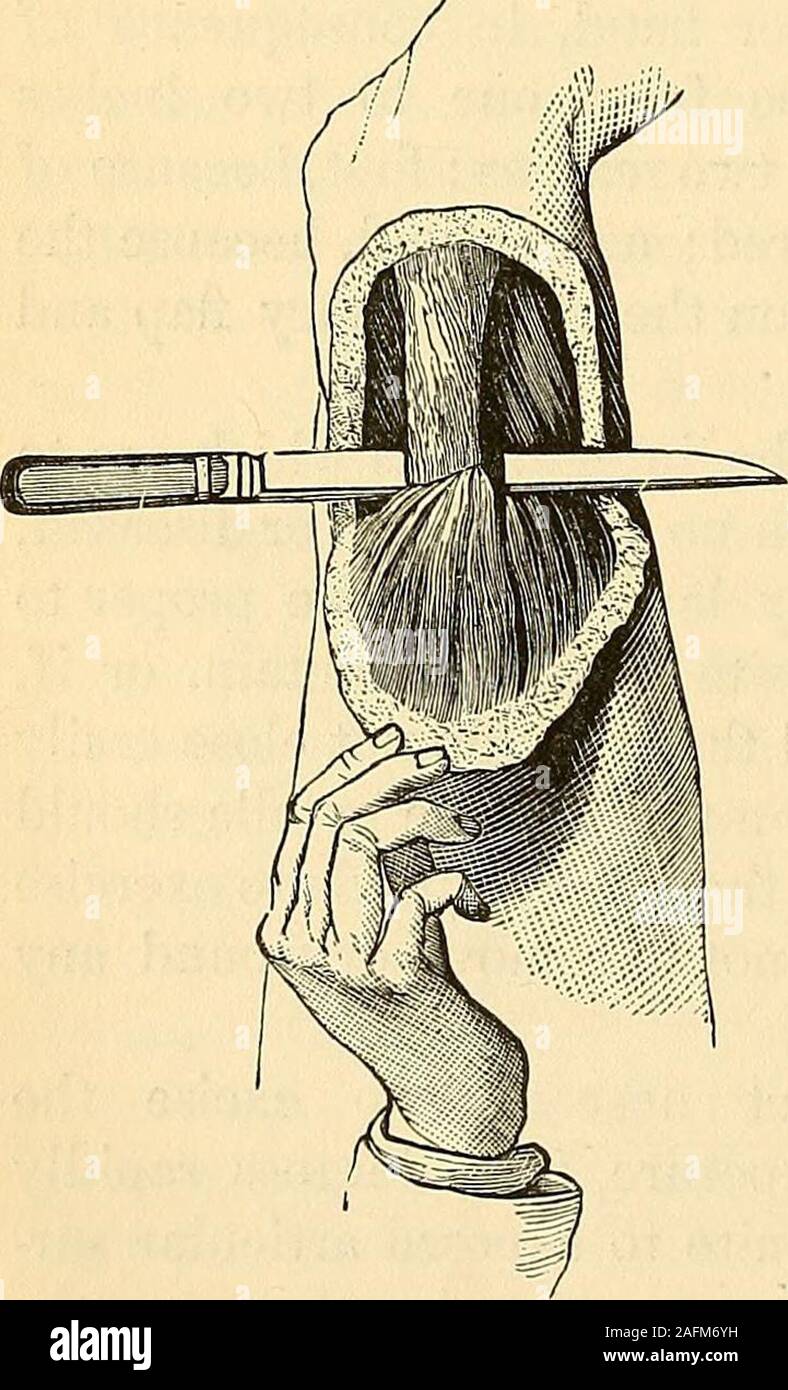. The principles and practice of surgery. the thigh in continuity. There are, however, many cases present-ed in which the circular incisions possessan advantage. When the limb is verylarge, either in consequence of unusualmuscular development, from an abund-ance of adipose tissue, or from serous in-filtrations, the pendulous masses formedby the flap method often give rise to ex-cessive suppuration and pyaemia; but inthighs of moderate or average size theflaps generally do well. When the flap method is chosen, la-teral flaps are to be preferred in thelower third of the femur, on account ofthe i

Image details
Contributor:
The Reading Room / Alamy Stock PhotoImage ID:
2AFM6YHFile size:
7.1 MB (350.7 KB Compressed download)Releases:
Model - no | Property - noDo I need a release?Dimensions:
1231 x 2029 px | 20.8 x 34.4 cm | 8.2 x 13.5 inches | 150dpiMore information:
This image is a public domain image, which means either that copyright has expired in the image or the copyright holder has waived their copyright. Alamy charges you a fee for access to the high resolution copy of the image.
This image could have imperfections as it’s either historical or reportage.
. The principles and practice of surgery. the thigh in continuity. There are, however, many cases present-ed in which the circular incisions possessan advantage. When the limb is verylarge, either in consequence of unusualmuscular development, from an abund-ance of adipose tissue, or from serous in-filtrations, the pendulous masses formedby the flap method often give rise to ex-cessive suppuration and pyaemia; but inthighs of moderate or average size theflaps generally do well. When the flap method is chosen, la-teral flaps are to be preferred in thelower third of the femur, on account ofthe insufficiency of muscular tissue uponthe anterior and posterior aspects of thelimb ; but in the upper and middle thirdsanterior and posterior flaps furnish thebest results, for the reason that whenlateral flaps are made in these regionsthe bone is apt to protrude at the upperangle of the wound, and cause serioustrouble. In amputations made through the upper third of the limb, the femoral artery must be controlled by pressure made with the. Amputation of Thigh in Lower Third. AMPUTATION AT THE HIP-JOINT. 375 thumb; one hand of the assistant grasping the trochanter, while thethumb rests upon the artery as it passes over the pubes, re-enforced bypressure made with the thumb of the opposite hand. In amputationsof the middle or lower thirds, the tourniquet will be applied to thefemoral artery in Scarpas space. The double antero-posterior flap is most rapidly and conveniently madeas follows:—The muscles and integument being lifted from the bonewith the left hand, the heel of a long, straight, single-edged amputatingknife is placed upon the front of the thigh, and while it is drawn fromthe heel to the point, an oval flap is made extending to the bone, andin length a little less than the semi-diameter of the limb. The pointof the knife, then, without leaving the limb, is entered below the bone, and, being thrust to the opposite side, is carried downwards and towardthe surface, forming a